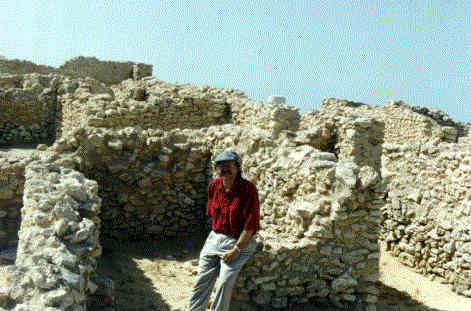History
Bahrain entered recorded history as a suburb of Mesopotamia (in what is now Iraq), and served as a meeting point for traders from there and traders from the Indus valley. "The Epic of Gilgamesh", the oldest written literature that we have, is set in Bahrain, which was then called Dilmun. It began as oral legends in about 2700 B.C., and was first "written" in cuneiform tablets in about 2000 B.C.
The story tells of how Gilgamesh, King of Uruk, a city in Mesapotamia, traveled to Dilmun to find answers to the questions he had about life when his dearest friend, Enkidu, had died in battle. Here he met Ziusudra, who himself had been taken here from Sumeria to enter the assembly of the gods as a reward after he survived The Flood.
Ziusudra explained to Gilgamesh that on Earth the only absolute is change. Sounds like a modern story to me.
In addition to being known as a trading center, it was also a major source of the world’s pearls until the 1930’s, when cultured pearls began to take over the market. As it happens, at about that time, oil was discovered in Bahrain, so the economy has recovered quite well from the loss of the pearl trade.
The Saar site, pictured here, appears to have been constructed in 3,000 b.c. It was covered with sand until about a hundred years ago, which is why it is in such good condition. It is sobering to think about the fellow who built this house, stone by stone, for his family. And then all of recorded history happened.

Yesterday, I made my way to the National Museum. Wow! This is a very impressive institution. First of all the building is beautiful. It is modern, airy and bright, with large galleries for the exhibitions. But the exhibits are fascinating, too. One gallery treated the earliest known history of Dilmun, from around 3,000 B. C. There aren’t a lot of places in the U.S. that describe what they were doing around 3,000 B. C. The Greeks later called it Tylos. Alexander the Great didn’t actually come here, but his influence did.
(They had a map of Alexander’s conquests. When I studied that map as a schoolboy, I had no idea where those places were. Now I do! He got as far as Bukhara and Tashkent, cities in the former Soviet Republics whose names sound like they were invented by Dr. Seuss — Uzbekistan, Tadjikistan. My wife Jola has been there.)
The museum has a gallery on Islamic life, which I found interesting. More interesting, though, was the gallery that contained a series of scenes showing daily life in "the old days". (It wasn’t clear to me exactly when, but I suspect that these scenes applied for a good many centuries.) Each exhibit was a mockup of a room, with people doing something. There was the grocer, the pharmacist, the barber, the blacksmith, and so forth. They were very well done. You could almost feel as though you were there. This is the experience a museum should give you.

On the north side of the island is the Portuguese Fort. Archeologists have found the remnants of fortifications here dating back to 3,000 B.C. The current structure is a restoration of a fort built by the Portuguese in the seventeenth century. This is a wonderful place. When I was a child I had a large treehouse, and I always imagined that it was like this fort. There are ramparts, hidden passageways, strange rooms, and incredible views (both over the walls and through funny little windows) of palm trees and the gulf beyond.

This picture is of my son Bob in one of the rooms. This one was strange because it had a series of ridges, about six inches high, across the floor. We never could figure out what those could have been about.
